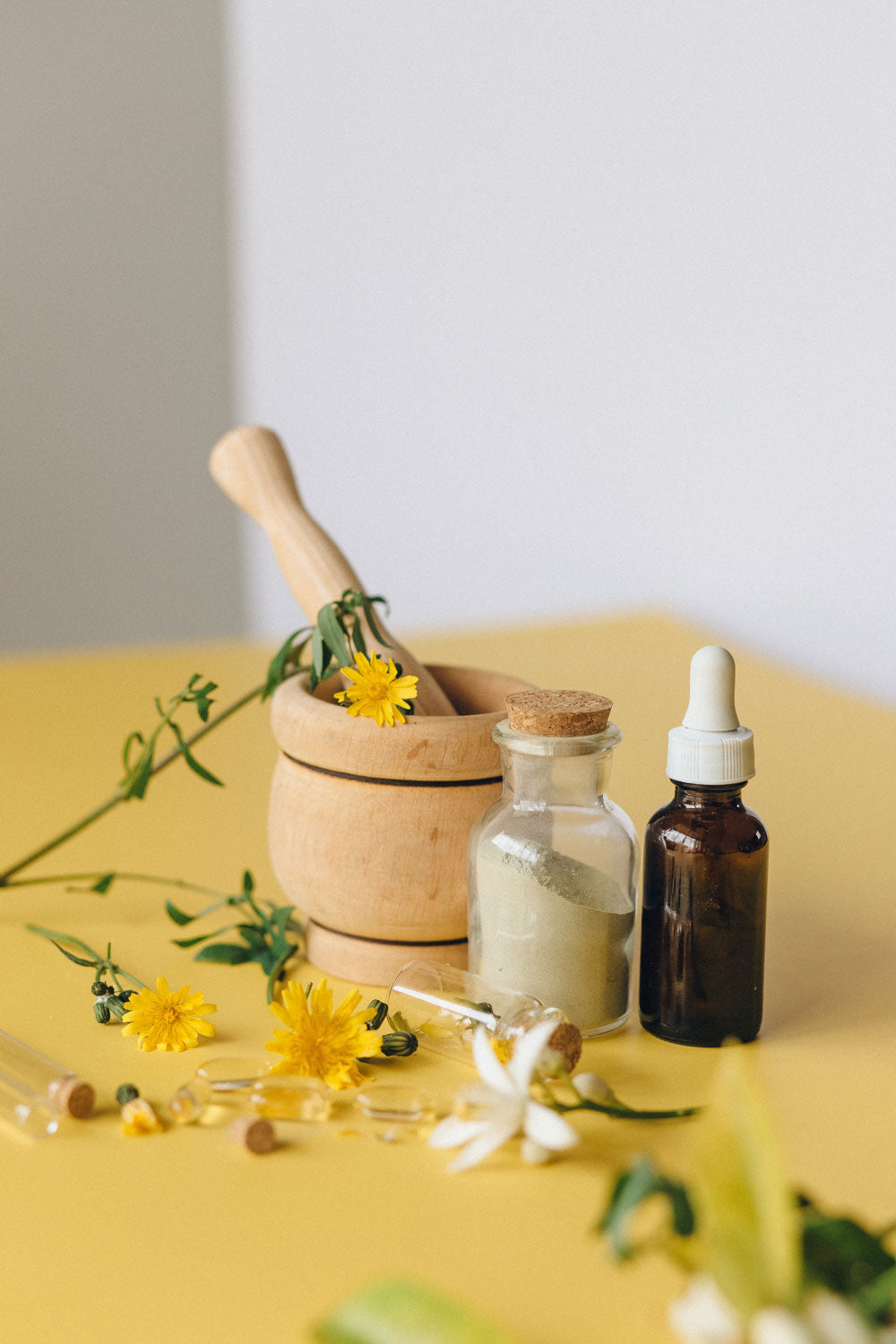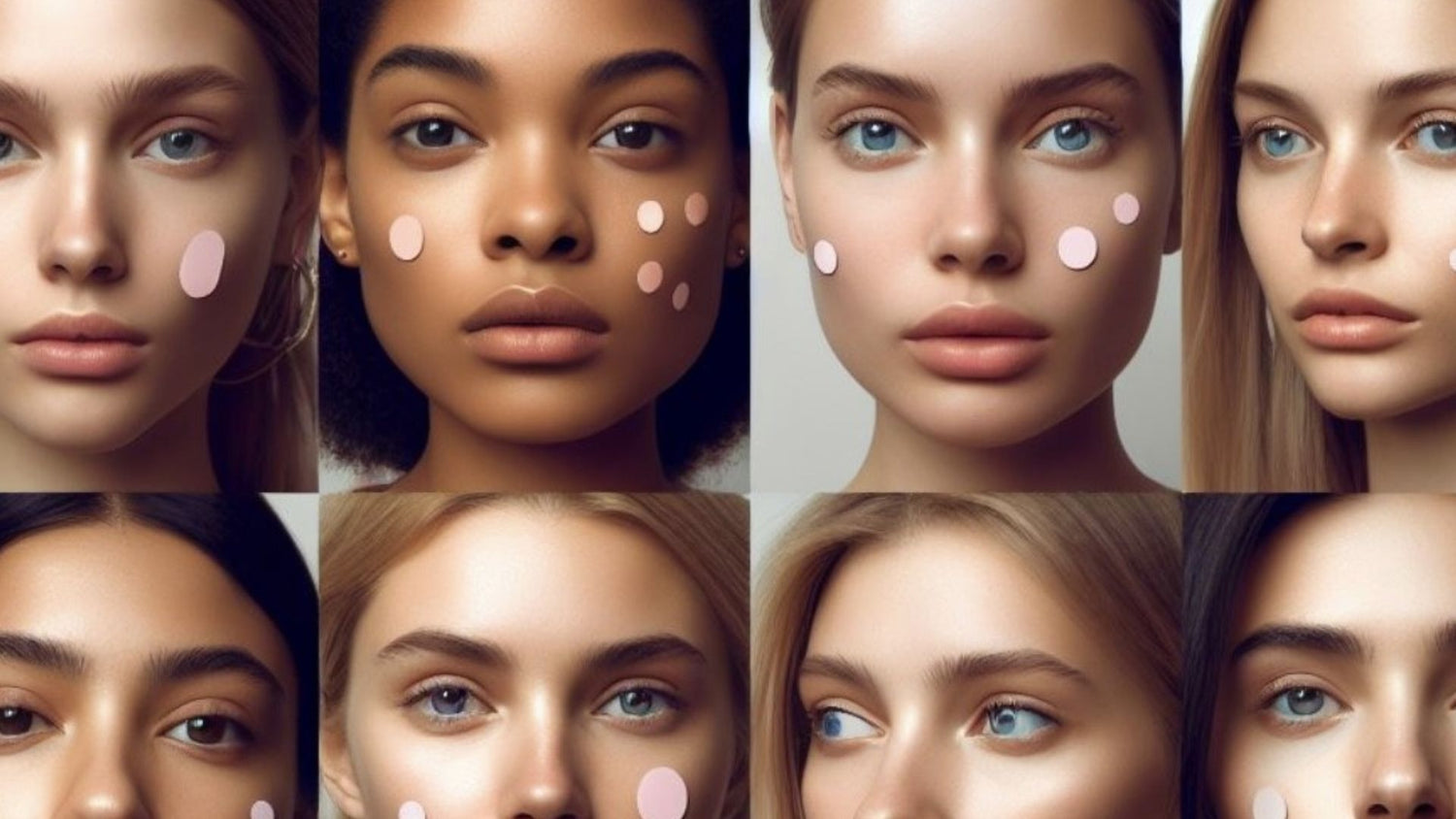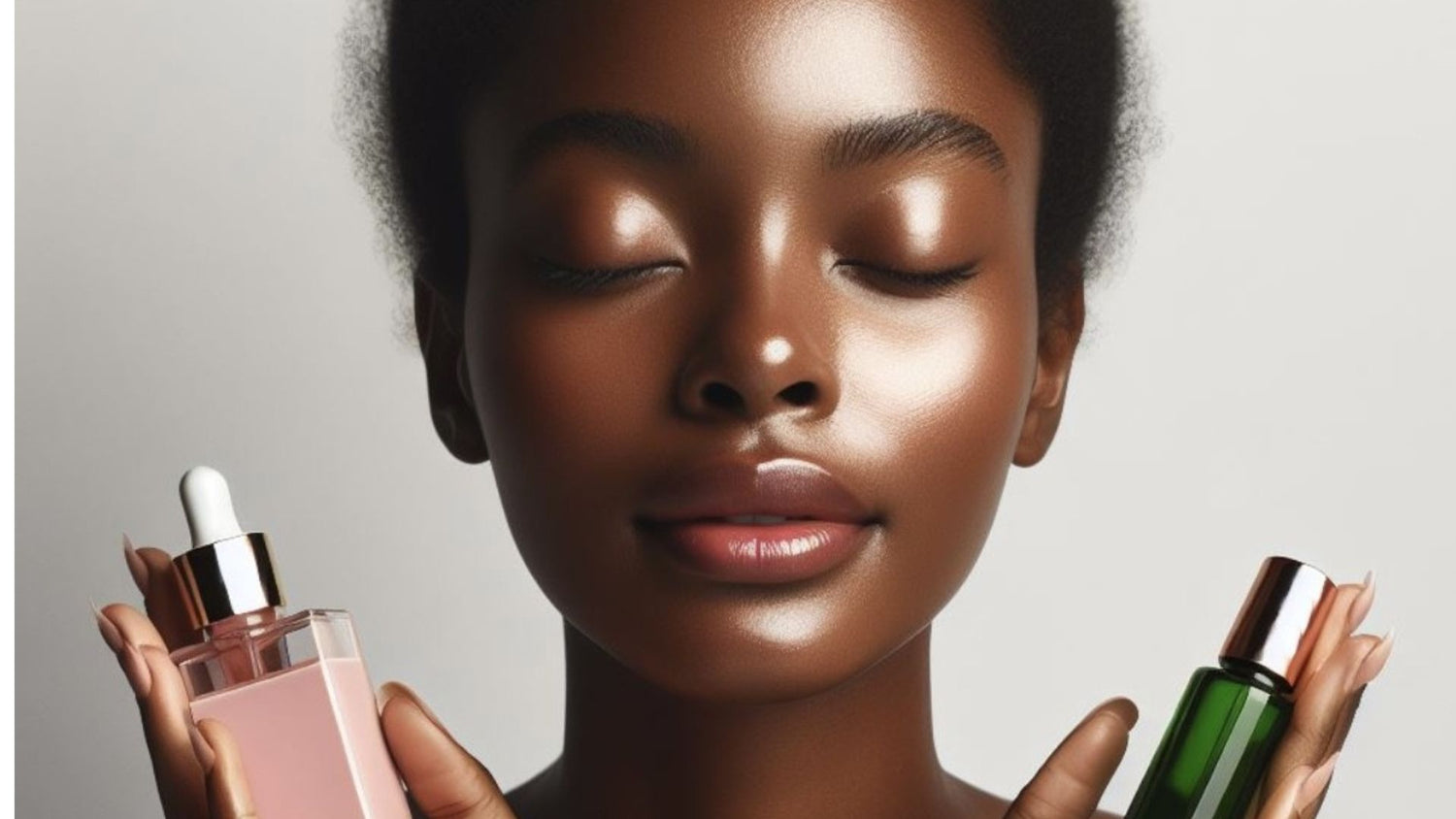Sunspots, also known as age spots, liver spots and solar lentigines, generally develop as you age as a direct result of sun (UV) exposure. These flat, rounded, tan to brown spots are common in people over the age of 40 and more so on those with light or fair skin.
Melanocytes are specialized cells in the skin which produce melanin, the substance that provides pigment to your skin. As the skin is repeatedly exposed to UV rays, the melanocytes can multiply and melanin can be overproduced, causing it to clump together and form sunspots.
True Sunspots are not harmful, but you may wish to treat them for cosmetic reasons. However, since some other conditions, including precancerous and cancerous spots, can look like Sunspots on your face or skin, you should always have a check-up by a dermatologist before you begin treating your sunspots. This is especially true if you opt for treatment at home with over the counter spot fading products. You don’t want to fade the cancerous spots so that you don’t notice them changing, giving them time to grow and spread.
So, how to get rid of Sunspots on your face? First, get a dermatologist to look you over. If they can’t tell by visual inspection, they may do a biopsy which means taking a small sample of skin to examine in a lab. This examination is important to make sure you are getting the right treatment for what you have, whether it’s Sunspots or some other skin condition. Also, a dermatologist can help you to determine the best treatment for you, whether a topical product or a procedure.
How to get rid of Sunspots on Your Face
One of the two general ways to get rid of Sunspots on your face is to use topical treatments to fade the spots and even the skin tone. The other way is to undergo procedures that affect the top layer of the skin to fade or sometimes remove the Sunspots. These procedures come with more risks and side effects, but may have better, more rapid results.
The following topical treatments can come in over the counter (OTC) creams and serums, or by prescription, depending on your needs and preferences. You should understand that treating Sunspots is primarily a cosmetic undertaking, and therefore you will be paying for it yourself. OTC products are likely to cost less and may be just as effective for your needs.
- Hydroquinone – this bleaching cream works by obstructing the action of tyrosinase, an enzyme required to make melanin. It has been restricted from all OTC products by the CARES Act, so it can only be obtained through a prescription. Hydroquinone is often used with prescription retinoids, such as tretinoin (a derivative of Vitamin A) as well as a mild steroid. But both hydroquinone and tretinoin have side effects, such as skin irritation, burning, dry skin, redness and itching.
Hydroquinone can also bleach the skin around the Sunspots on your face if you don’t put it on just right. Also, it increases your skin’s sensitivity to the sun.
Hydroquinone must not be used by pregnant or breastfeeding women because it gets into the mother’s bloodstream and may affect the developing fetus or nursing baby, although the effects are unknown.
- Tretinoin – is the prescription form of retinol that can be found in OTC products. It helps to fade sunspots by promoting cell turnover to get rid of dark surface cells in the Sunspots on your face and replace them with new, lighter cells. In addition to the side effects listed above, retinol also increases your skin’s sensitivity to the sun.
Retinol must not be used during pregnancy either as an adverse effect on the fetus cannot be ruled out due to the fact that oral retinoids cause birth anomalies.
- Alpha Hydroxy Acids (AHAs) like glycolic acid are chemical exfoliants that can also help to fade Sunspots on your face. Glycolic acid works by breaking the bonds between dead skin cells and the cells beneath to help shed the old cells, leaving new, lighter cells in their place.
- Vitamin C is a multifunctional active ingredient that not only helps to prevent the formation of Sunspots on your face but also helps to fade them. And, unlike hydroquinone, Vitamin C will fade Sunspots without changing the color of your surrounding skin.
Vitamin C promotes cell turnover to help fade Sunspots on the face and brighten your overall complexion. But, most importantly, Vitamin C interferes with the enzyme tyrosinase which is essential to the production of melanin. And since the overproduction of melanin is what causes Sunspots, Vitamin C both prevents them from forming and helps to fade those that have already formed.
Additionally, Vitamin C protects your skin from both UVA and UVB rays, the cause of Sunspots. But it is not a substitute for sunscreen, and you should always wear one with an SPF of at least 30.
Vitamin C is also a powerful antioxidant that can stop free radicals from damaging your skin and leaving dark spots behind. UV rays are the biggest environmental culprit when it comes to creating free radicals in the skin. Free radicals are unstable atoms that try to steal their missing electron from healthy skin cells, causing profound damage to the cells. But Vitamin C can prevent this through its antioxidant properties.
And, Vitamin C is an anti-inflammatory that helps to reduce redness and stop dark spots from forming as a result of inflammation. Due to all of these actions, Vitamin C is a highly effective skin lightener.
But Vitamin C in its purest form, L-ascorbic acid, can be unstable and will oxidize when exposed to air, light and heat and turn brown, sometimes even on your skin. This presents a challenge for reaping its many benefits for skin lightening. However, Beautystat has solved this problem by creating the world’s first stable, pure Vitamin C serum that will never oxidize or turn brown. It’s Universal C Skin Refiner will provide all the skin-lightening benefits of Vitamin C as well as stunning anti-aging effects. And, Beautystat’s Universal C Skin Refiner can transform your skin in just 4 weeks.
Sunspots on Face Treatment
The following treatments are performed in a doctor’s office and should only be performed by a certified and trained dermatologist or other specialists. These treatments may give you quicker results or even completely remove some Sunspots, but they will also be more expensive and may require a number of sessions. It is important to note that these Sunspots on your face can come back even after treatment, so you must use sunscreen and protective clothing to avoid this.
- Laser resurfacing – removes the outer layers of the skin to get rid of dark spots. The amount of work you want to be done will determine, in large part, the type of laser used. This is one reason an experienced, certified dermatologist should be employed. This method has some substantial recovery time.
- Intense pulsed light therapy (IPL) – uses pulsed light to destroy the melanocytes, thus removing the Sunspots. This will take more than one session and also requires some downtime as the skin will feel sunburnt, may bruise for a few days, and will become crusty and peel after a week or so.
- Chemical peels – acid is applied to the skin and causes the top layers to be removed (peel off after some time), leaving new cells in their place. This can be painful, cause long lasting redness and even scarring. And, it may take several treatments to see noticeable results.
- Microdermabrasion – is basically professional exfoliation which removes dead skin cells by removing the top layer of skin and stimulating the formation of new skin. It is sometimes used in conjunction with a chemical peel for enhanced results.
- Cryotherapy – uses liquid nitrogen to freeze the Sunspots. It’s briefly painful. When the area heals (sometimes after a blister or scab), the skin tone will become more even. While rare when properly performed, this procedure can leave a scar.
Best Treatment for Sunspots on Your Face
Given the side effects, cost, and healing time required for professional procedures, the best treatments for Sunspots on your face are likely to be topical creams and serums. And of those, Vitamin C stands out with its multiple actions that target and prevent or fade Sunspots.
Beautystat’s Universal C Skin Refiner stands out among Vitamin C products with its stable, 20 percent L-ascorbic acid formula that targets Sunspots on the face.
White Sun Spot on the Face
These are called idiopathic guttate hypomelanosis (IGH). The name means of unknown cause (idiopathic), resembling a drop or teardrop (guttate) with decreased or absent pigment (hypomelanosis). In other words, white spots of unknown cause, except they have been associated with long-term UV exposure. It is thought that this overexposure to UV rays damages or destroys the melanocytes, thus reducing melanin production. Genetics, however, also seem to play a role, as these white sunspots tend to run in families.
These spots are usually small, measuring in millimeters (around 1-6), and are round and flat. As with Sunspots, they are more prevalent in people with fair skin, and the older you are, the more likely you are to develop them. In fact, 50 to 80 percent of people over 40 have them. They tend to affect women at a younger age than men.
Treatment for IGH is limited. The best thing you can do is use sunscreen and protective clothing to prevent them and keep the ones you have from expanding.
Retinoids can promote cell turnover, and evening out skin tone. They may also help to repigment the area through their ability to aid in melanin production. Vitamin C also promotes cell turnover and its ability to target hyperpigmented areas, such as around the white Sunspots, can even the skin tone and lessen the appearance of those white spots. Using a retinoid, such as retinol and Vitamin C together would increase the stimulation of cell regeneration and thereby increase the resulting reduction in white sunspots.
Dermabrasion removes the top layers of skin to reveal new skin beneath. Cryotherapy has also been used to treat white Sunspots and may provide some repigmentation over the course of several months.
Sunspots Or Face Cancer?
One of the most important reasons for getting a dermatologist to check your Sunspots before treating them is that they may look like Sunspots, but actually be cancer or pre-cancer. If caught early, treatment is highly effective.
Sunspots, age spots, and liver spots do not turn into cancer, though cancerous spots may be mistaken for them. If you notice any spots that are darkly colored or black, have an unusual combination of colors, are growing rapidly, developing irregular edges, itching, red or tender, or bleeding, consult your doctor or dermatologist right away as this could be melanoma, a dangerous form of skin cancer. Melanoma actually arises in the melanocytes, the pigment cells, so it is easy to see how these two types of spots can get confused without an expert eye.
Liver Spots on the Face
Liver spots have nothing to do with the liver. Other names for liver spots are Sunspots, age spots, and solar lentigines. You would get the same treatment for a spot you called a liver spot as you would for a sunspot.
Age Spots on the Face
Age spots on the face are the same as Sunspots on the face. Both appear as you get older and are the result of overexposure to the sun or tanning beds. They are also called Sunspots, liver spots, and solar lentigines.
Sunspots on the Skin
Sunspots on the skin look similar to those on the face. They tend to appear in areas that receive the most sun exposure, such as the backs of the hands, the forearms, shoulders, back, and face. Sunspots on the skin are different from freckles. Freckles can be an inherited trait, but Sunspots are not.
Sunspots on the skin may be treated with all of the same methods as those on the face. But not all methods are ideal for all areas of skin. A board-certified dermatologist would be the best person to advise you on which treatments would be best for you and for which areas of your body.
Vitamin C can be used safely on the skin of your body as well as your face with the same multifaceted benefits. Just be sure to do a patch test before use.
White Sunspots occur on the body as well as the face, usually beginning in the lower body. Again, they may be treated as you would treat your face in appropriate instances as suggested by your dermatologist.



